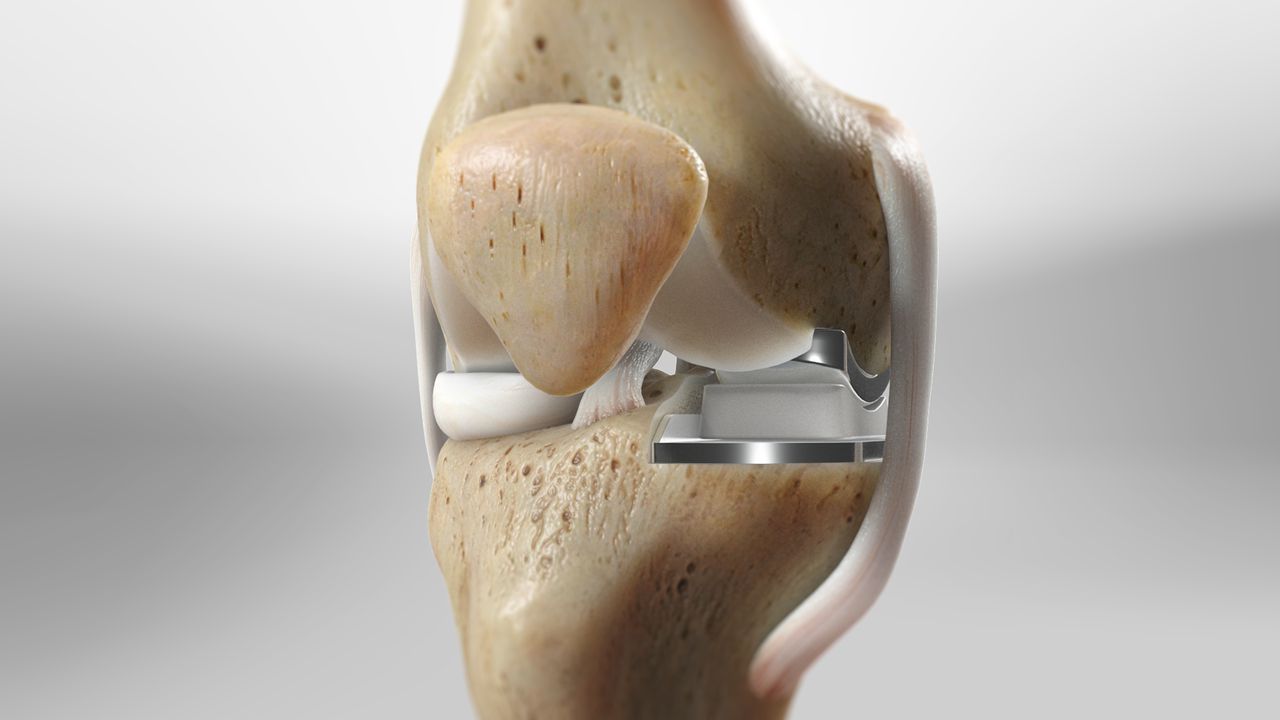Total knee arthroplasty
Total knee arthroplasty or total knee replacement is an orthopedic surgical procedure in which the articular surface of the femur and leg bones in the knee joint is replaced with an artificial surface. There is at least one piece of polyethylene that is placed between the femur and lower leg. In 50% of cases, the patella is replaced. Reasons for knee replacement are ossification, patellar injury or implant fracture. The goal of patellar reconstruction is to restore the contraction mechanism. The level of loss of bone density (poki) determines the type of patellar knee prosthesis. The purpose of this operation is to eliminate knee pain and restore the optimal range of motion in the knee joint.
When the entire knee compartment is damaged, a total knee replacement may be necessary. The main reason for needing a complete knee replacement is arthritis. Arthritis causes joint cartilage to be damaged and no longer able to absorb shock. There are many external risk factors that can cause knee osteoarthritis. For example: overweight, previous knee injury or partial removal of the meniscus, rheumatism, fractures and congenital factors.

